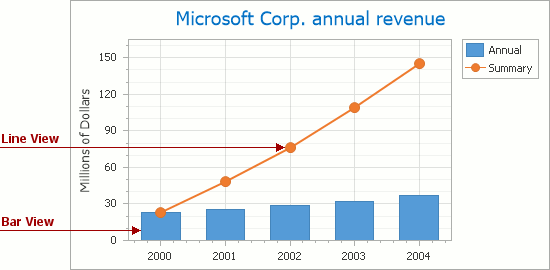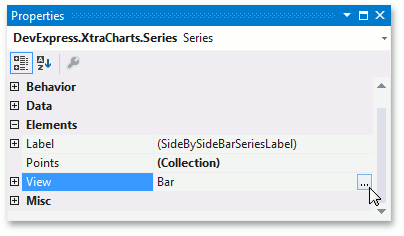Series Views
- 2 minutes to read
This section describes the specifics of series view types in the WinForms Chart Control.
Depending on the specifics of your chart’s underlying data, there are different series view types available. The view type of a series determines the overall look and behavior of a chart’s series.

The series view type is closely connected with chart’s diagram type. So, each diagram type is used to plot series of a certain view type only, and the set of options for each diagram type is unique. For the list of diagram types available, refer to Diagram.
To simultaneously plot multiple series with different view types, you should ensure that their view types are compatible. By default, a diagram’s type is auto-determined by the view type of the first visible series in the SeriesCollection. To learn more on the compatibility of different view types, refer to Series Views Compatibility.
You can define the required view type when you first create a series, or change it on the fly, via the SeriesBase.View property.

For detailed instructions, refer to How to: Change the View of a Series.
Note that at design time, it’s only possible to specify a view type individually for a manually created series (manually added to the ChartControl.Series collection). For auto-created series, you can only define a view type individually at runtime. To learn more on this, refer to How to: Individually Change the View Type of Automatically Created Series.
In addition, via the SeriesBase.View property, you can access the specific series options available for this view type.

At runtime, you should cast the SeriesViewBase object, which is stored in the Series.View property, to the appropriate view type class.
PieSeriesView view = chartControl1.Series["U.S. population structure"].View as PieSeriesView;
if (view != null) {
view.RuntimeExploding = true;
}
The available series view types are listed in the following topics: